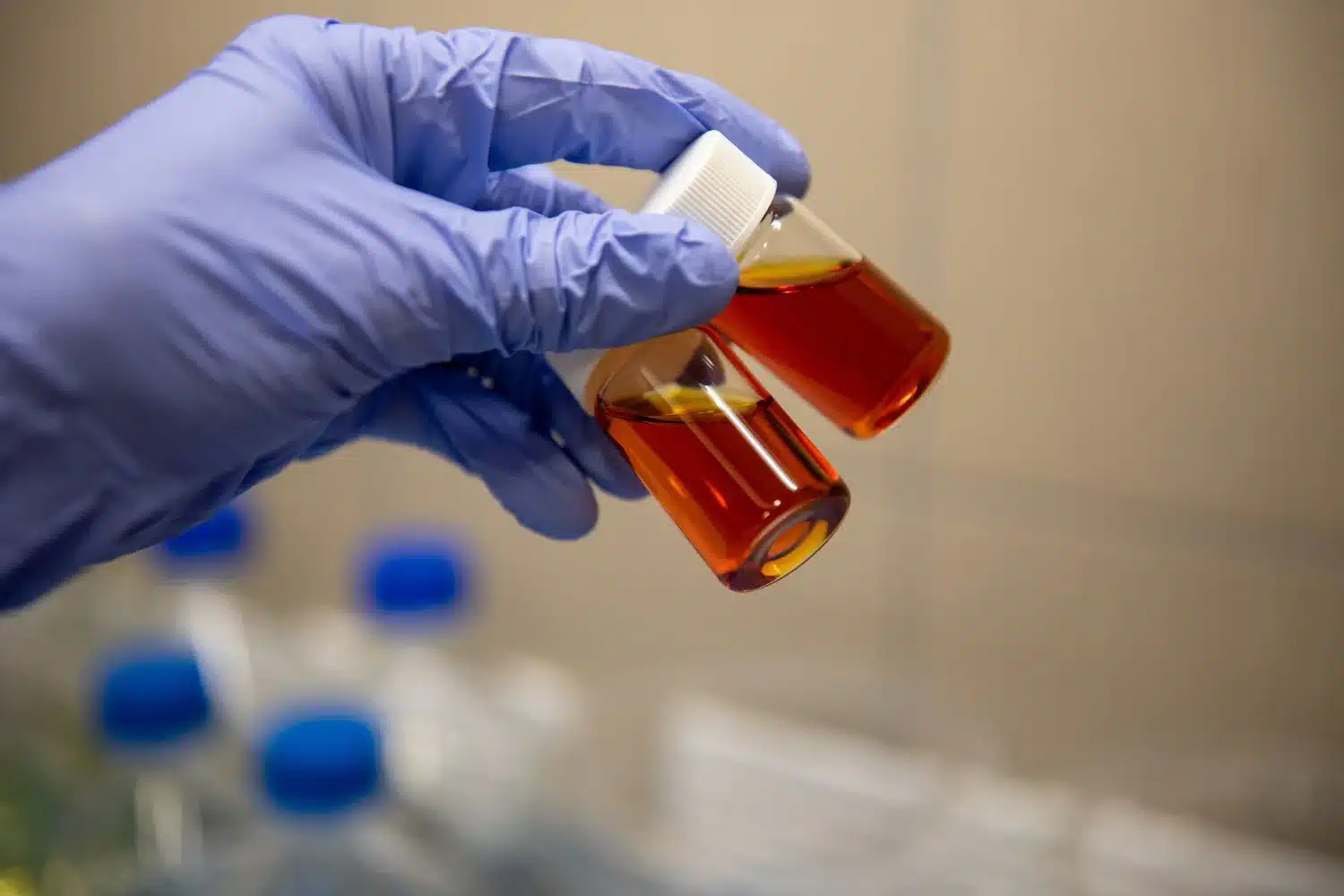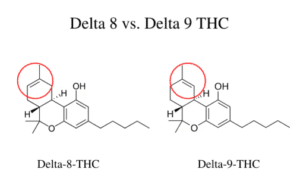Does THC lose potency over time? The simple answer is yes. THC degradation is a natural process where cannabis products gradually lose strength and quality due to factors like heat, light, air, and humidity. For consumers, this often means weaker effects, and for businesses, it can create compliance risks and product losses.
In this guide, we’ll explore what THC degradation is, why it matters, how long THC lasts in different forms, and the best ways to prevent it.
Sections
ToggleWhat Is THC Degradation?

THC degradation is the chemical breakdown of tetrahydrocannabinol (THC), the main psychoactive compound in cannabis, into other compounds such as cannabinol (CBN). This process happens naturally over time but speeds up when cannabis is exposed to heat, light, oxygen, or poor storage conditions.
When THC breaks down, products lose potency, change in taste and aroma, and may provide effects that are different from what was originally intended.
Why Does THC Degradation Matter?
Cannabis products are used for their recreational and therapeutic benefits, but THC degradation hampers these experiences.
1. Potency Loss
THC degradation directly impacts cannabis’s psychoactive potency. Over time, the potency diminishes significantly, resulting in weaker effects.
2. Product Quality
Degradation affects the product’s overall taste and aroma profile, not just the potency. It leads to inferior product quality.
3. Compliance & Labeling
In most markets, cannabis products must have accurate potency labelling. As THC degradation can cause labeled potency values to fall, it can create compliance issues.
What Causes THC to Degrade?
Several factors result in the degradation of cannabis products:
1. Temperature
Heat is one of the primary catalysts for THC degradation.
But, what temp does THC degrade exactly?
Several studies have shown that THC starts degrading at temperatures above 70°F (21°C), and the process rapidly accelerates above 100°F (38°C).
2. Air (Oxygen)
After heat, oxidation is the primary cause of THC degradation. Oxidation occurs when oxygen reacts with THC molecules, leading to a breakdown into other compounds, such as CBN.
3. Light
UV light, especially direct sunlight, accelerates THC degradation as it can easily break down THC molecules. Even artificial lighting can also accelerate the breakdown of THC molecules, though to a lesser extent than UV radiation.
4. Humidity
The right level of humidity is essential to preserve cannabis. Excessive moisture or overly dry conditions can promote THC degradation. While high humidity leads to mold growth, too low humidity can cause trichomes to become brittle and lose potency.
How Long Does THC Last Before It Degrades?
Different cannabis products have different shelf lives.
| Product Type | Shelf Life (Proper Storage) | Signs of Degradation |
|---|---|---|
| Flower | 6 to 12 months before noticeable loss, major loss after 1 to 2 years | Darker color, brittle texture |
| Concentrates | 1 to 2 years | Change in texture or color |
| Edibles | 6 to 12 months depending on ingredients | Altered flavor or aroma, weaker effects |
Signs Your THC Has Degraded
Now we know at what temperature THC degrades, but how do we know if the product is degrading?
Here’s how:
1. Weaker Effects
As mentioned, THC degradation primarily affects the potency; if there are diminished psychoactive effects, it indicates degradation. When active THC has converted to less potent compounds like CBN, it loses potency.
2. Visual Changes
Natural forms like cannabis flowers can become darker, brittle, or develop spots as THC degrades. Other forms, like concentrates, might change color or texture.
3. Aroma Shift
Alongside THC, terpenes, which contribute to cannabis aroma, also degrade. If the smell is muted or altered, it indicates cannabis degradation.
4. Lab Testing
For definitive evidence, you can opt for lab testing the product to measure current THC levels compared to the original potency.
How to Prevent THC Degradation
There are several ways to prevent THC degradation.
1. Ideal Storage Conditions
Always store cannabis products in cool, dark places. Maintain stable temperatures between 60-70°F (15-21°C) and humidity levels of 55-65% in storage units.
2. Packaging Innovations
For extended shelf life, you can store cannabis products in advanced packaging like vacuum-sealed containers, nitrogen-flushed packaging, and UV-protective materials.
3. Cryogenic Drying (Optional)
Cannabis processors can also use cryogenic drying techniques to reduce moisture content while preserving terpenes and cannabinoids. As the process uses extremely cold temperatures to remove water, it preserves volatile terpenes while slowing down degradation.
THC Degradation and CBN: What's the Connection?
THC degrades into CBN because of decarboxylation combined with oxidation. With a similar molecular structure, THC and CBN have varied effects. While THC produces the signature “high,” cannabinol has more sedating effects. As THC degrades into CBN, the products have more sedating effects than psychoactive experiences.
Implications for Cannabis Businesses
THC degradation affects the entire cannabis industry.
1. Cultivators
Cultivators must control THC degradation to maintain quality throughout the supply chain by proper drying, curing, and packaging.
2. Retailers
Retailers must adopt proper storage practices, inventory rotation (FIFO), and educate staff about degradation. It will help them maintain product quality and customer satisfaction.
3. Extractors
At commercial scale, THC preservation is essential to provide a consistent experience to customers. Using stabilizing agents, appropriate packaging, and controlling processing temperatures can help prevent or slow down THC degradation.
Conclusion
THC degradation is a natural process that can be slowed down to maximize the potency and quality of the products. Understanding and controlling the influencing factors will help manage everything from the intensity of psychoactive effects to product compliance and business profitability.
Understanding at what temperature THC degrades and taking proactive steps to minimize degradation are essential to maintaining quality standards and customer satisfaction. Producers must take all steps necessary to prevent degradation from proper storage conditions and innovative packaging to optimized processing techniques.
FAQs
Q. 1 Does THC degrade in heat?
Yes. It begins degrading at 70°F and speeds up above 100°F.
Q.2 Does weed lose potency after a year?
Yes. Even under good storage, flower starts losing noticeable potency after 6 to 12 months.
Q.3 Is degraded THC harmful?
No. It is not harmful, but it produces weaker and more sedating effects due to higher CBN levels.
Q.4 Does freezing cannabis preserve THC?
Yes. Freezing slows down degradation, but products must be stored in airtight, moisture-proof containers to prevent damage.




